How to Adapt In-Person Training for Online Settings
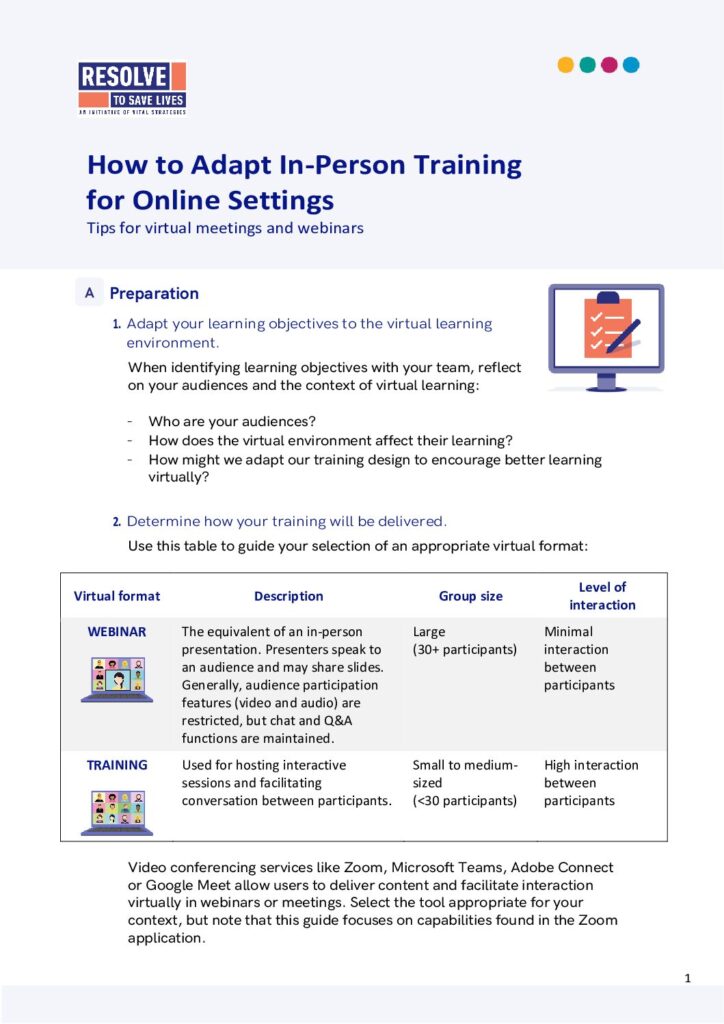
Tips and tools for facilitating trainings online.
Letter to Congress
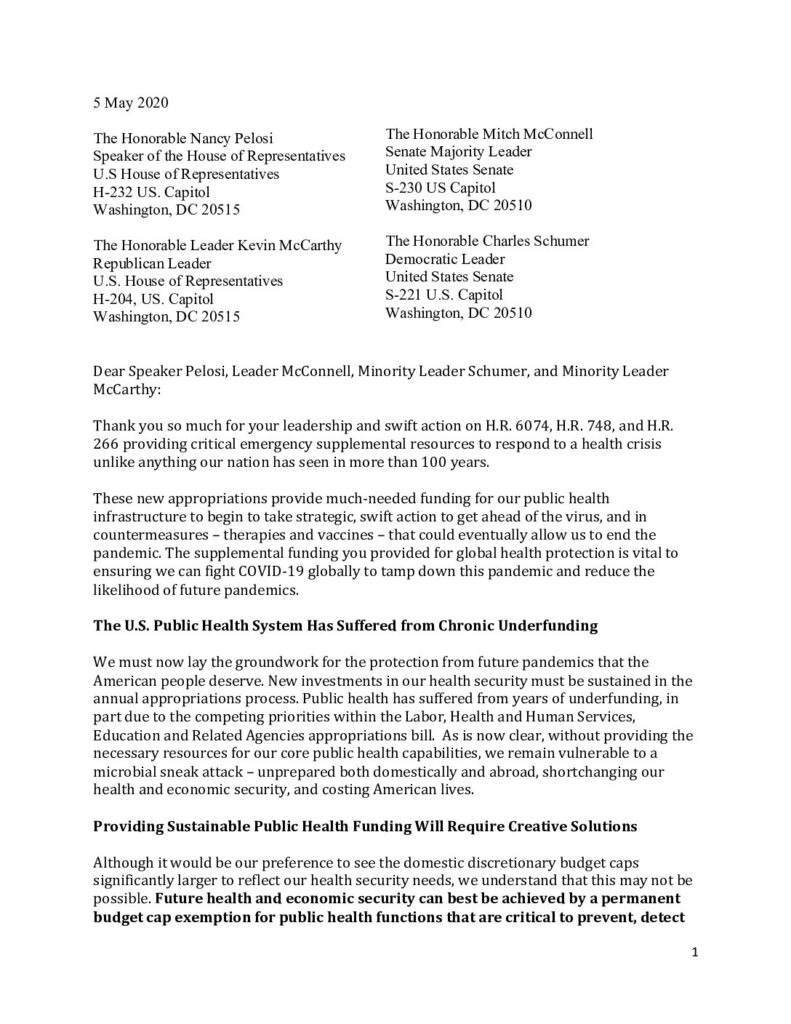
A letter to US Congress advocating for investment in health defense to prevent, detect, and respond to future outbreaks.
Dedicated Preparedness Teams
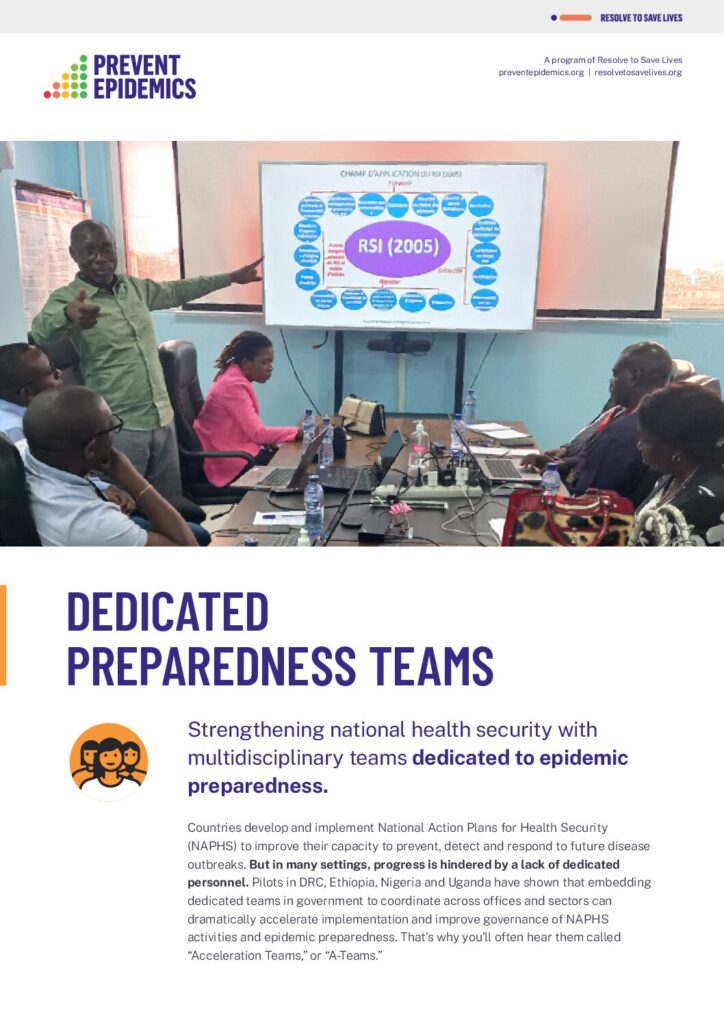
Strengthening national health security with multidisciplinary teams dedicated to epidemic preparedness.
Advocacy Action Guide: A ToolKit for Strategic Policy Advocacy Campaigns

A guide designed to help civil society organizations plan and conduct effective advocacy campaigns that will result in the adoption and implementation of strong effective public health policies.
Public Health Media Advocacy Action Guide: Elements Of A Media Advocacy Campaign

A guide designed to help civil society organizations plan public health media advocacy through a media advocacy campaign.
A ToolKit for Strategic Policy Advocacy Campaigns: Concluding Your Campaign: A Checklist
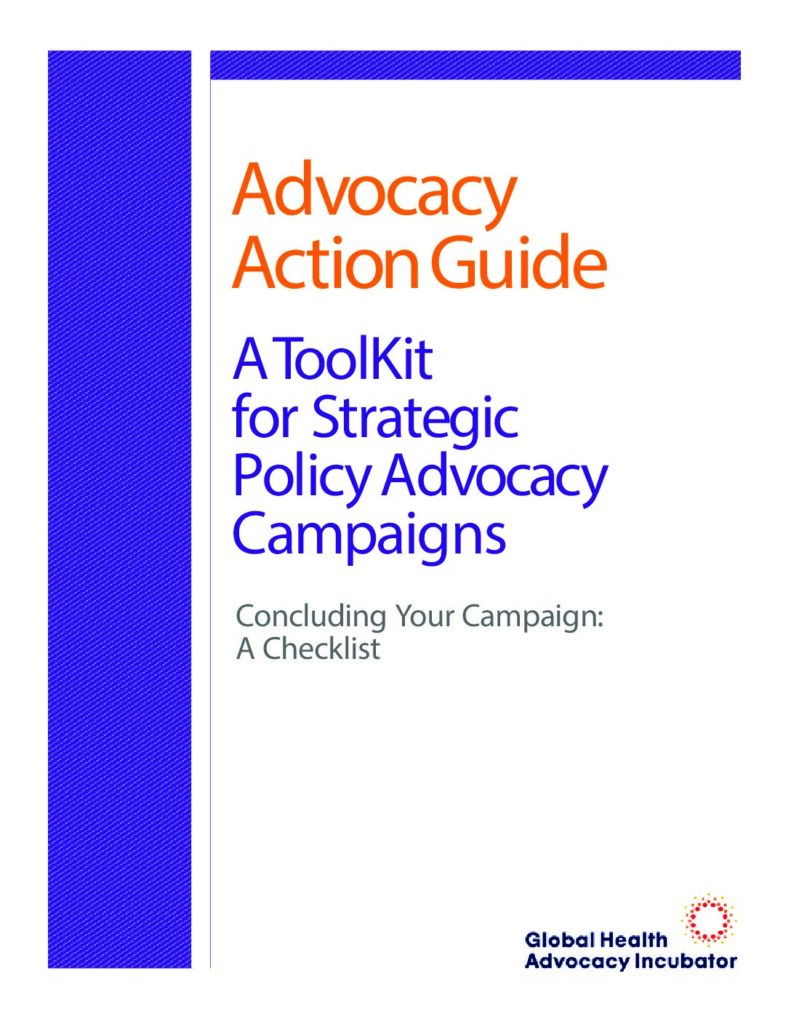
A guide designed to help civil society organizations plan a strategic policy advocacy campaign with specific details on how to conclude the campaign.
Fast-Tracking Funding for Epidemic Preparedness in the Democratic Republic of Congo (DRC)
A case study on fast-tracking funding for epidemic preparedness in the Democratic Republic of Congo .
12 Characteristics of an Effective Public Health Emergency Law
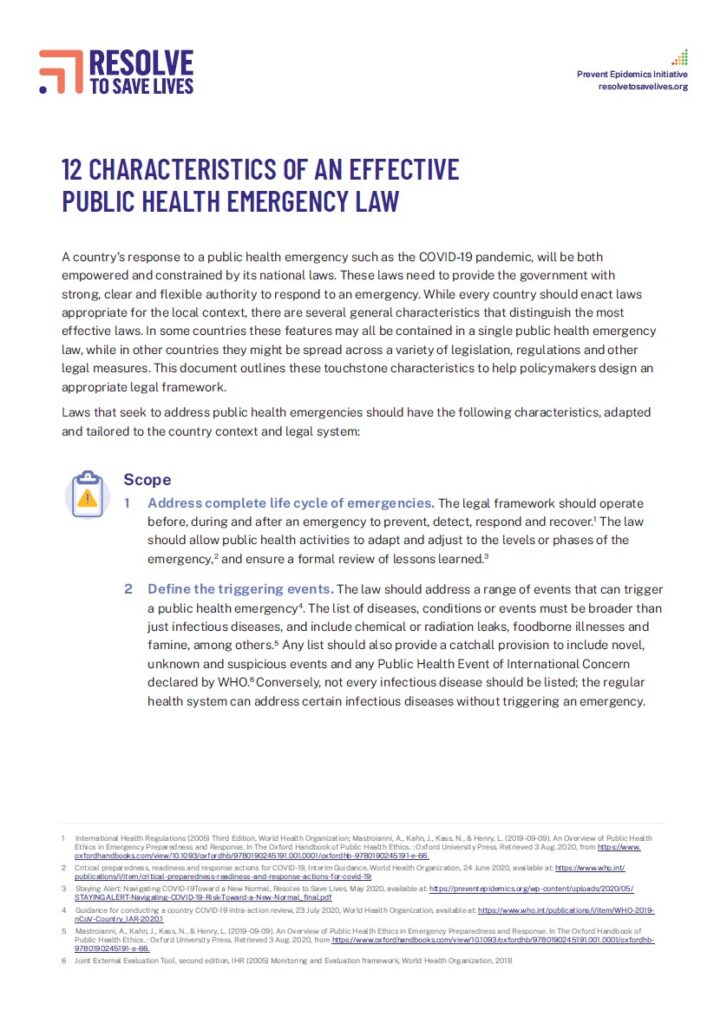
An outline of 12 characteristics that make a public health law effective, to help policymakers design appropriate legal framework.
Revealing the Toll of COVID-19: A Technical Package for Rapid Mortality Surveillance and Epidemic Response
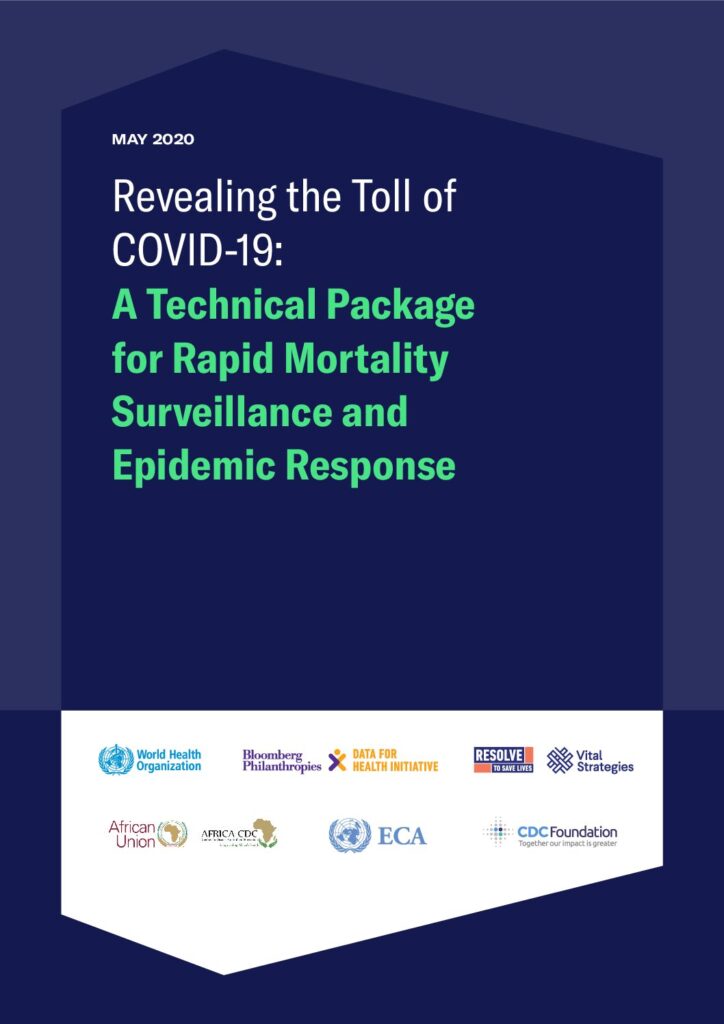
Practical guidance to implement rapid mortality surveillance (RMS) and measure excess mortality in the context of the COVID-19 pandemic.
Guide for Analysis of Respiratory Syndromic Surveillance Data
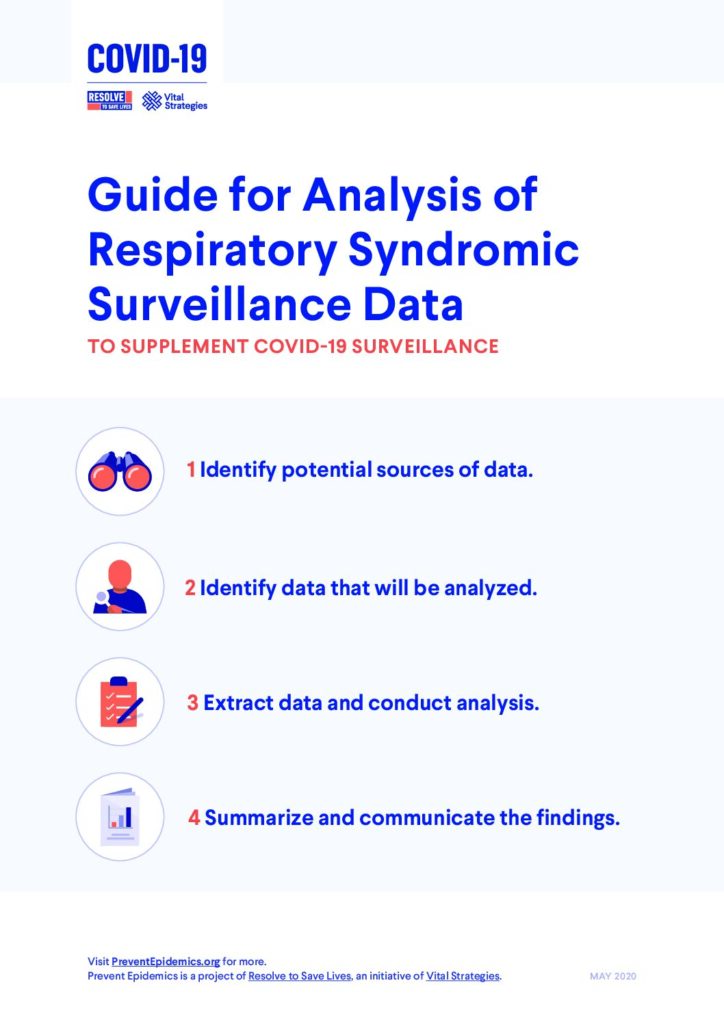
Practical guidance on using existing data from respiratory disease surveillance systems and hospital-based routine data systems to supplement COVID-19 surveillance and inform response activities.
Annex 1: How to create a COVID-19 alert-level system and supporting communication tools in resource-constrained settings
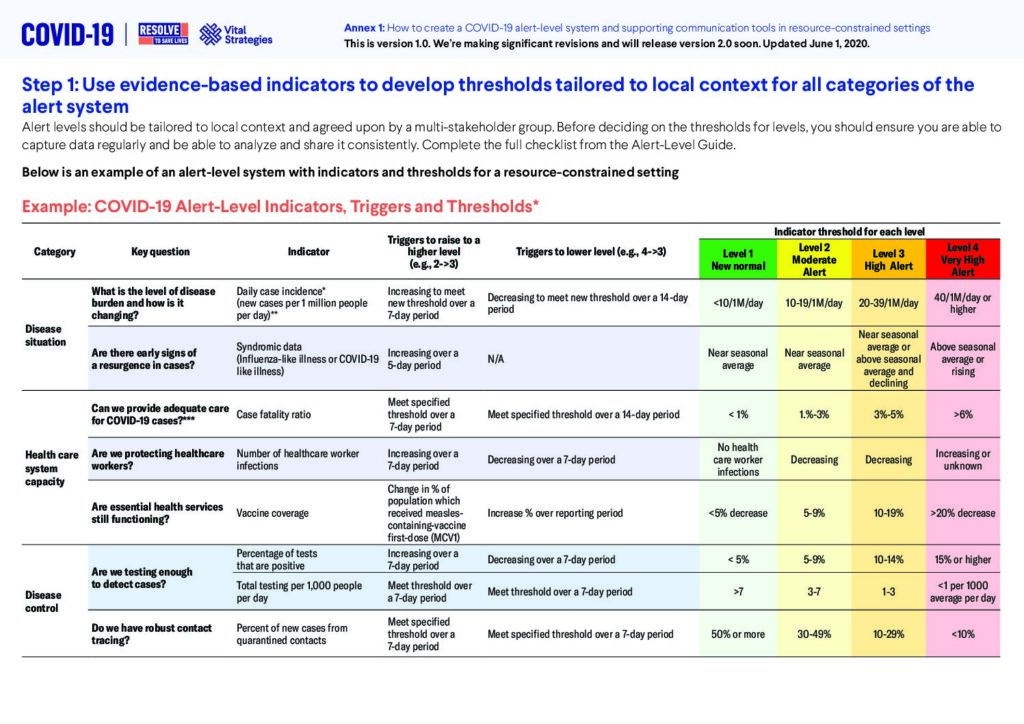
Step-by-step guidance on creating an alert-level system.
Infection Prevention and Control for Ebola (EVD) and COVID-19

This infographic outlines key infection prevention and control measures for Ebola Virus Disease (EVD) and COVID-19, focusing on practices like hand hygiene, the proper use of personal protective equipment (PPE), safe patient handling, and waste management.
A ToolKit for Strategic Policy Advocacy Campaigns Strategic Planning: Talking with Policy-Makers
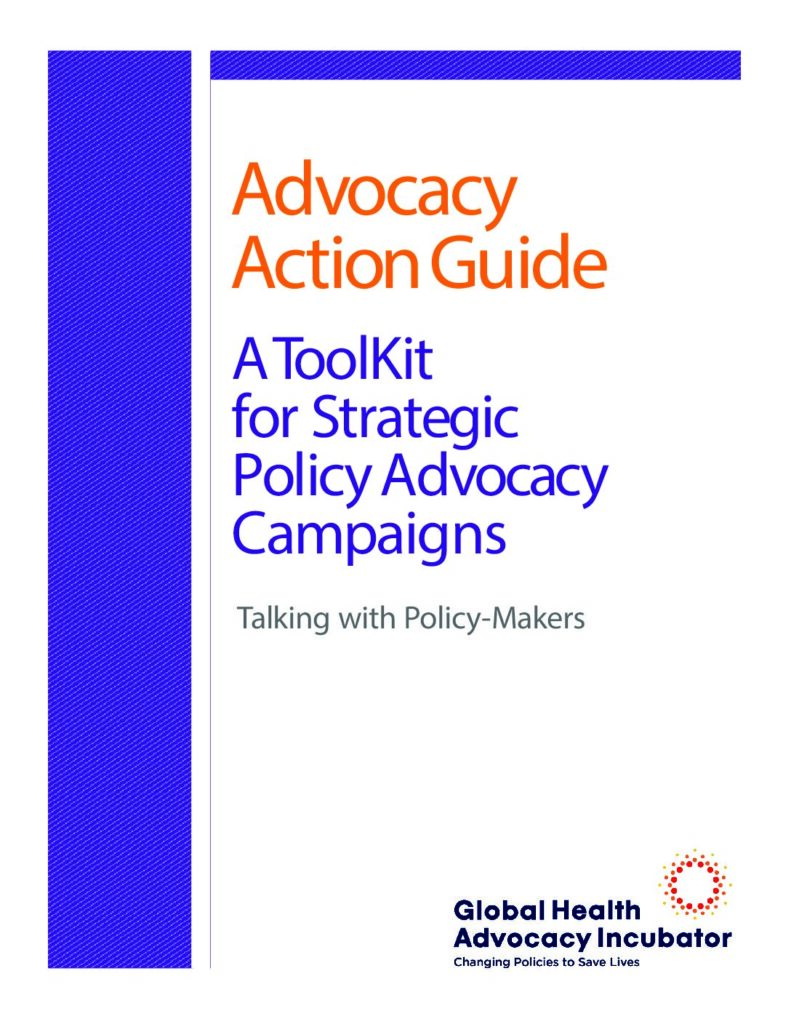
A guide designed to help civil society organizations plan a strategic policy advocacy campaign with specific details on how to talk with policy-makers.
A ToolKit for Strategic Policy Advocacy Campaigns Strategic Planning: How-to Guide
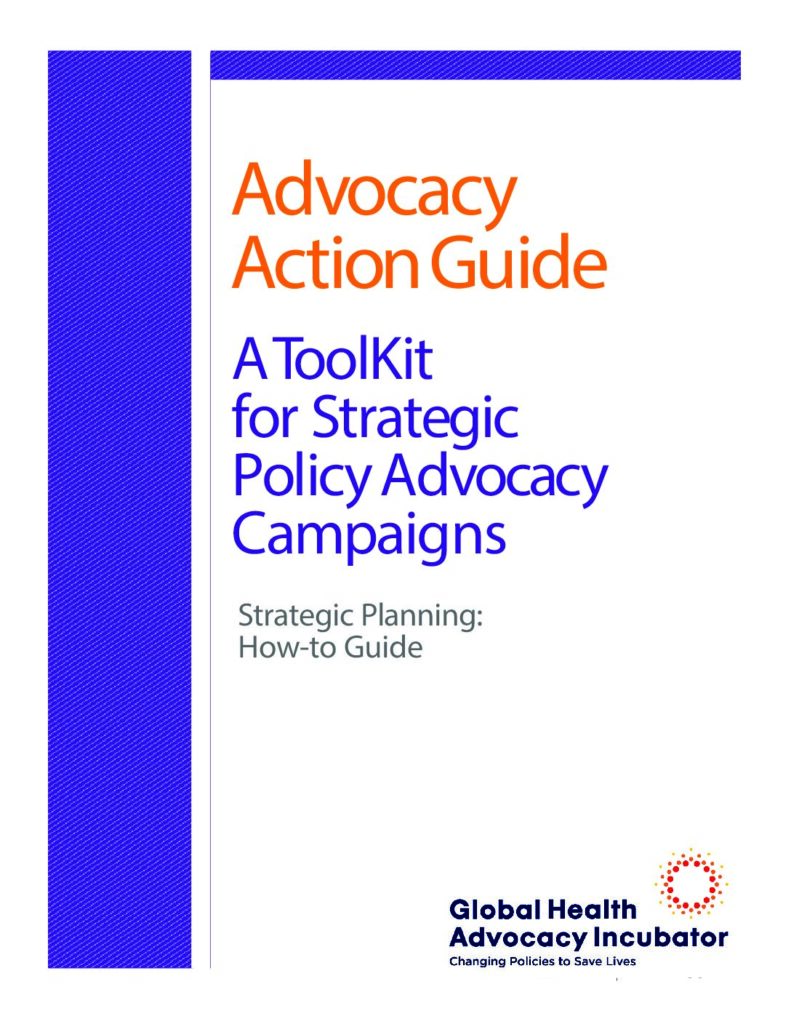
A how-to guide designed to help civil society organizations plan a strategic policy advocacy campaign.
A ToolKit for Strategic Policy Advocacy Campaigns Strong Partnership Coordination: A 5-Step Process

A toolkit designed to help civil society organizations plan a strategic policy advocacy campaign with specific details on how to coordinate strong partnerships.
Elements Of A Media Advocacy Campaign: What You Need to Know
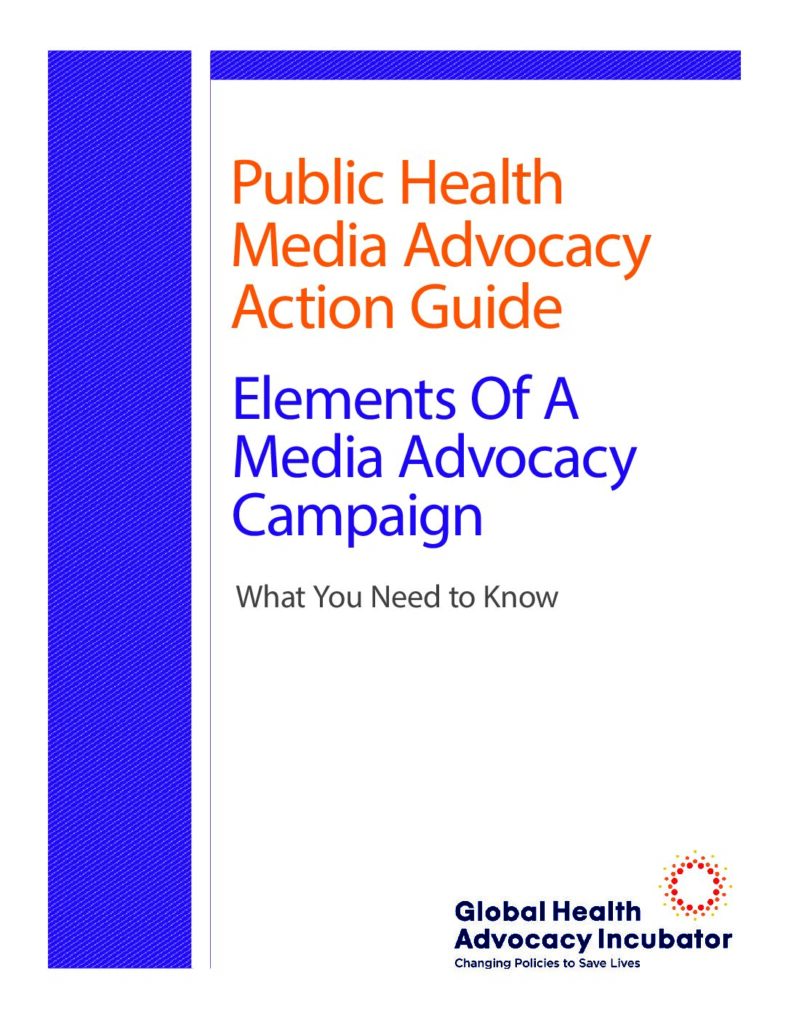
A guide designed to help civil society organizations plan public health media advocacy through a media advocacy campaign.
A ToolKit for Strategic Policy Advocacy Campaigns: Elements of a Policy Advocacy Campaign
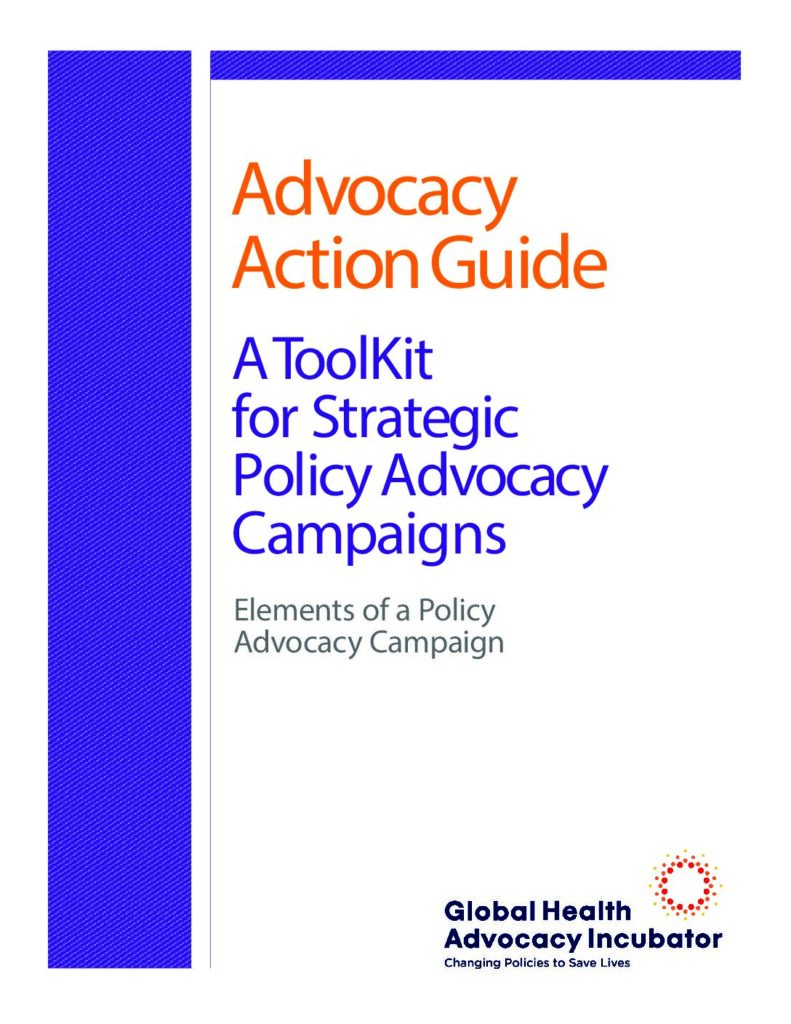
A toolkit designed to help civil society organizations plan a strategic policy advocacy campaign.
Considerations for the Development of a National Public Health Institute (NPHI)
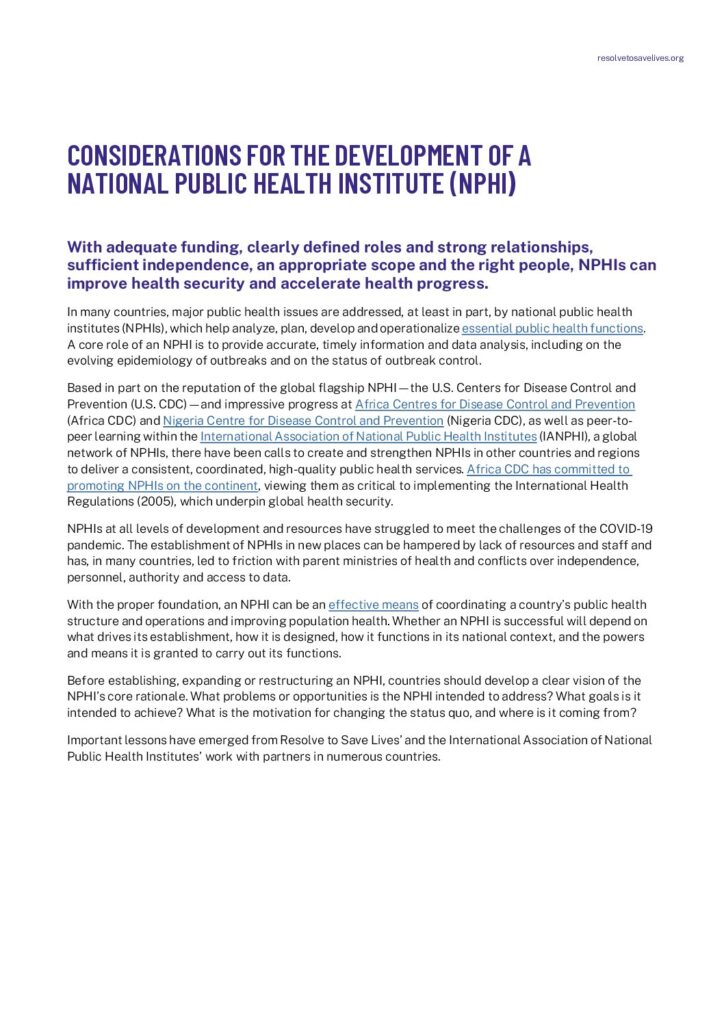
An overview of considerations for the development of a national institute of public health for countries to utilize in their planning.
“Voices” of Long COVID Stress the Urgency of COVID-19 Vaccination

An overview of Resolve to Save Lives’ 2020 awareness campaign to highlight COVID long-haulers’ experience and urge vaccine uptake.
Strengthening Epidemic Preparedness at the Country Level
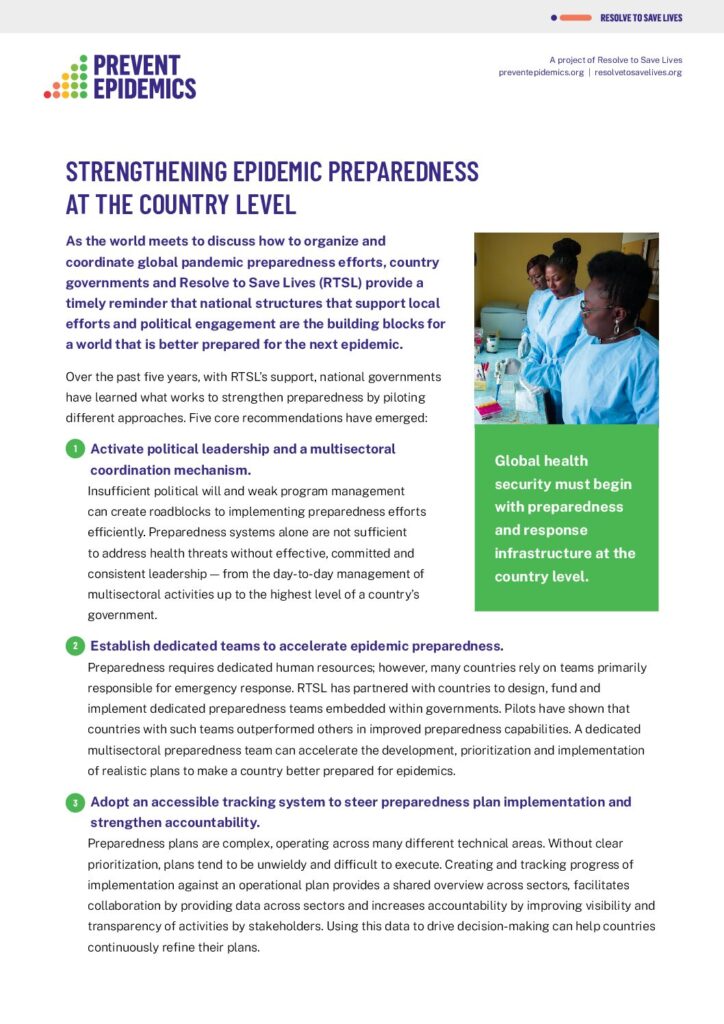
Five core recommendations from national governments that have learned what works to strengthen preparedness by piloting different approaches.
Strengthening Epidemic Preparedness at the Country Level
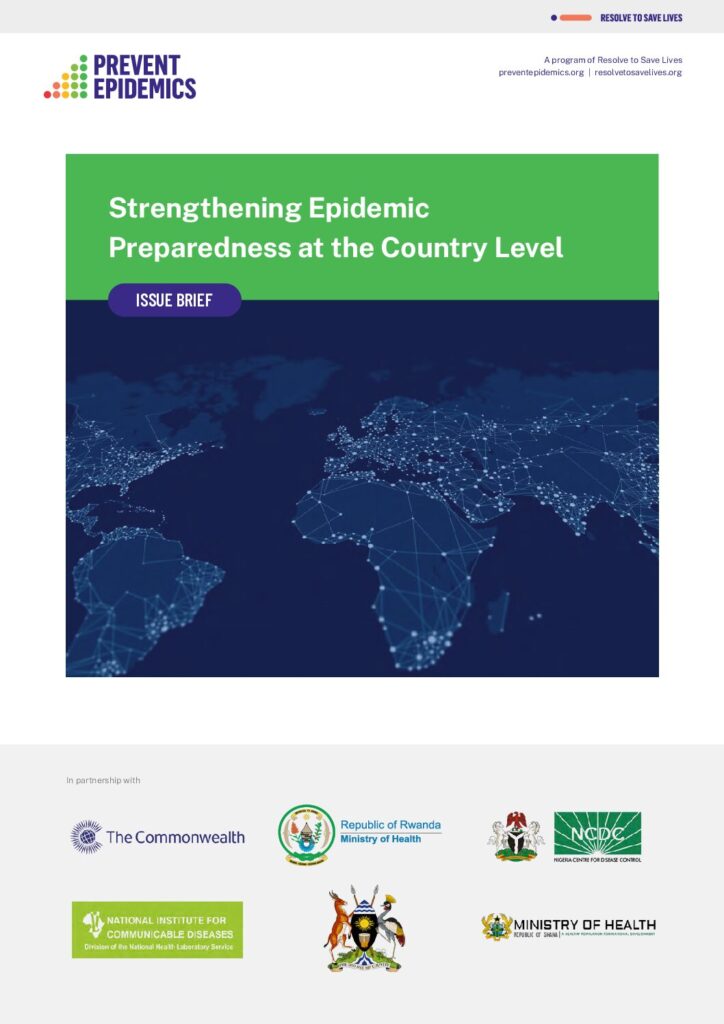
An issue brief outlining recommendations on adapting and strengthening global health so that it is fit-for-purpose for the next health threat.
International Health Regulations
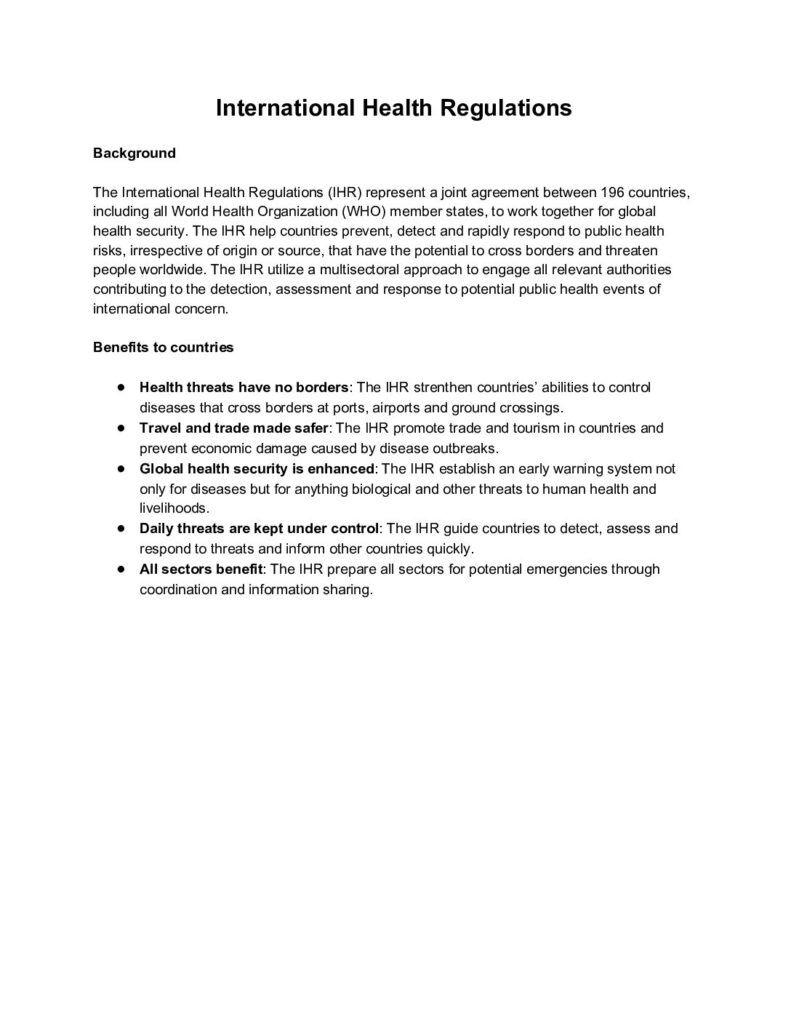
A fact sheet providing an overview of the IHR with FAQ’s.
PMEP 2023-2024: Frequently Asked Questions
A FAQ document on program management for epidemic preparedness.
PMEP Overview
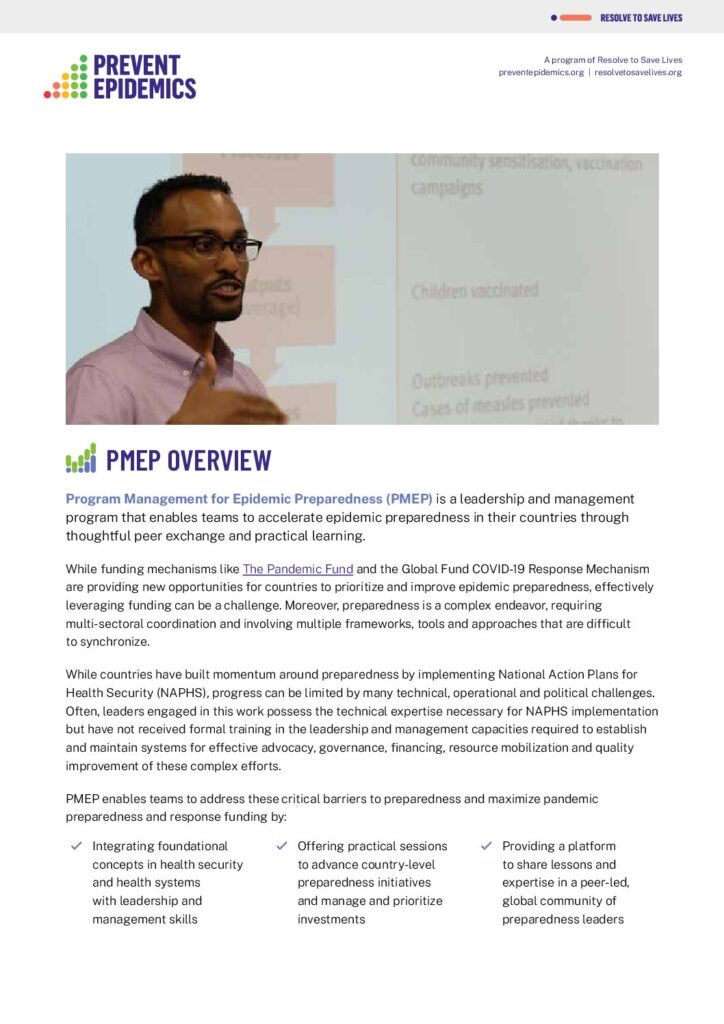
An overview of program management and epidemic preparedness, a leadership and management program that enables teams to accelerate epidemic preparedness in their countries through thoughtful peer exchange and practical learning.
7-1-7 Pilot Project
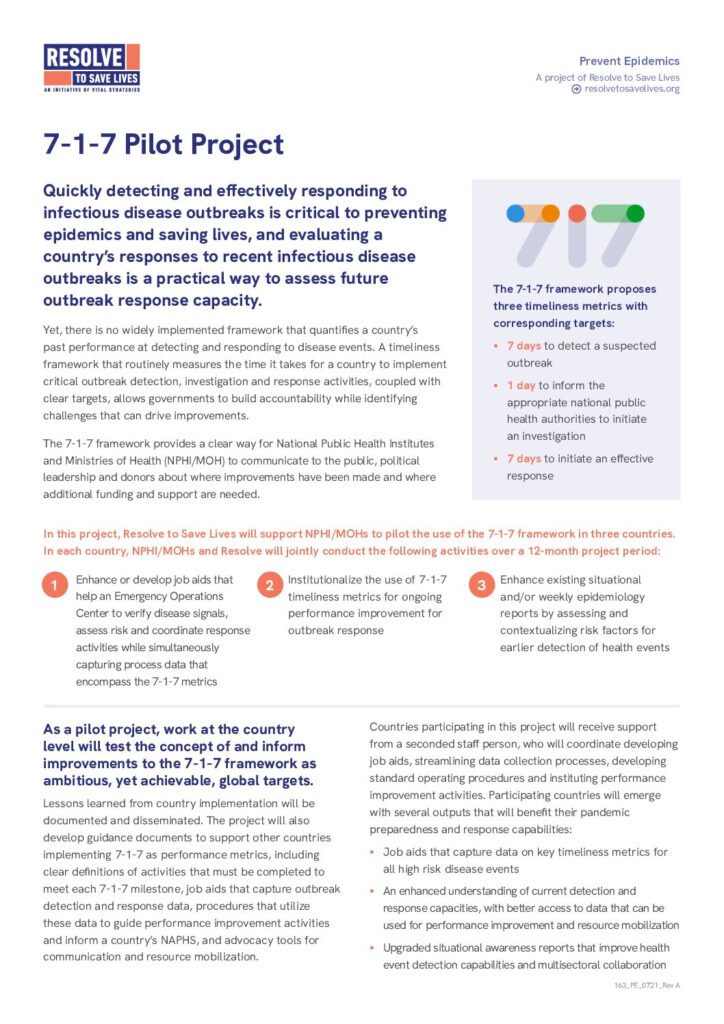
The 7-1-7 framework helps countries strengthen their outbreak detection and response by setting clear targets: 7 days to detect a suspected outbreak, 1 day to inform public health authorities, and 7 days to initiate a response. This pilot project tested the framework in three countries to improve pandemic preparedness and guide performance improvements.
Key Infection Prevention and Control (IPC) Messages for Ebola Virus Disease (EVD) at Health Care Facilities
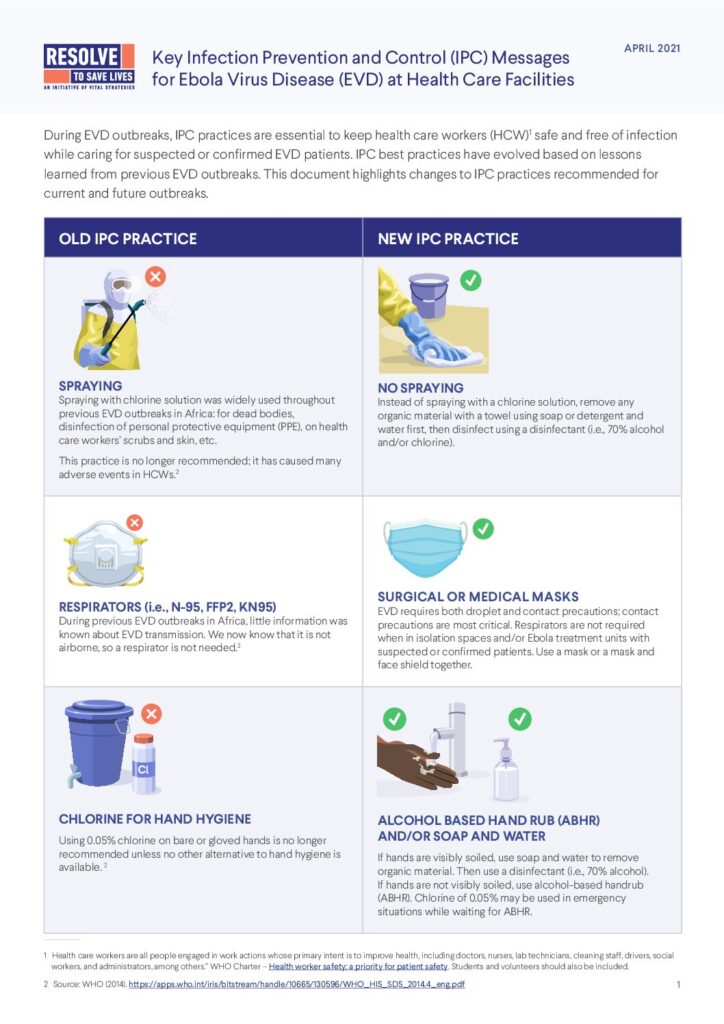
An overview of changes to infection, prevention and control (IPC) practices recommended for Ebola Virus Disease (EVD) outbreaks.
International Health Regulations (IHR)
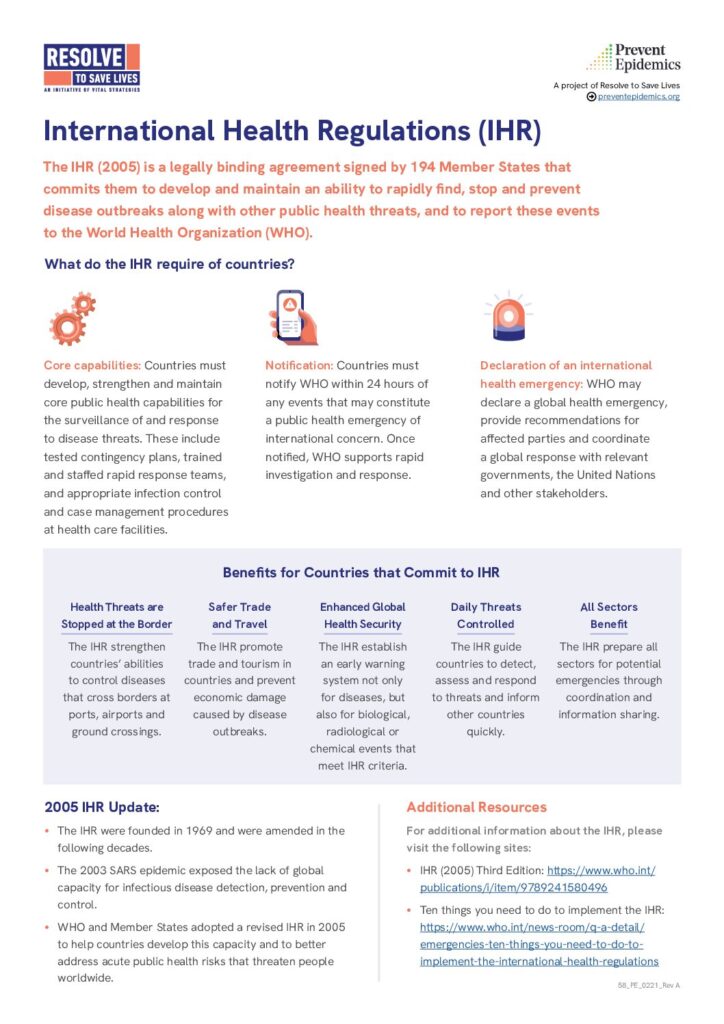
An overview of the International Health Regulations.
Joint External Evaluation
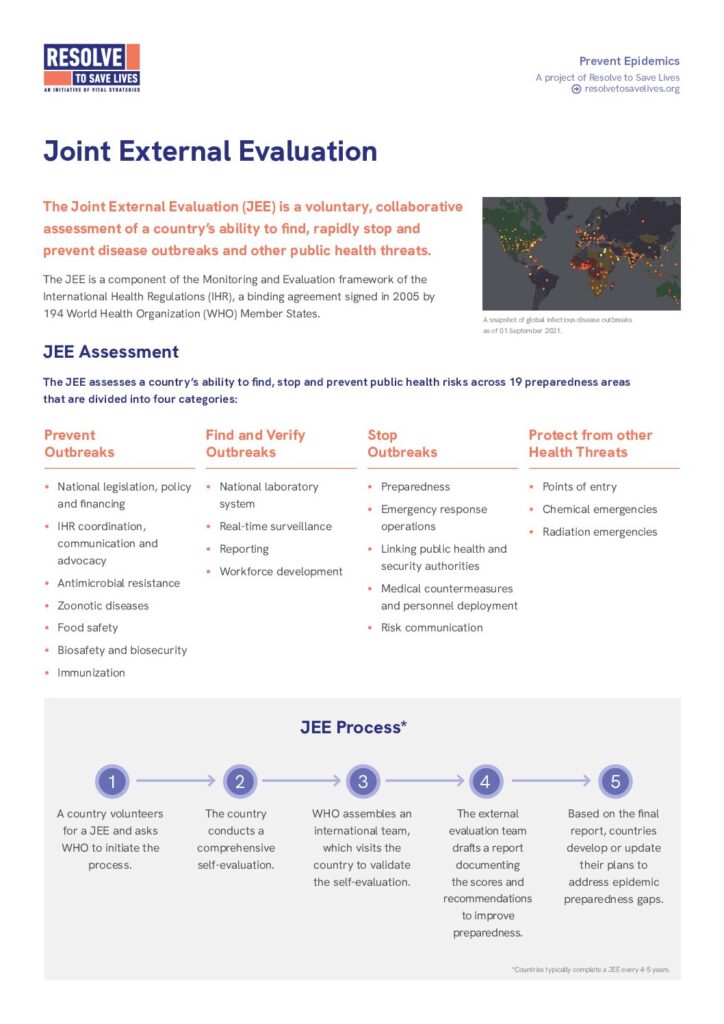
An overview of the Joint External Evaluation (JEE), a voluntary, collaborative assessment of a country’s ability to find, rapidly stop and prevent disease outbreaks and other public health threats.
Measures to Improve COVID-19 Response

A step- by-step framework to use in analyzing and improving their systems of epidemic control. This outlines targets for key completeness measures and time intervals between activities, based on mathematical models of case investigation and contact tracing, to effectively reduce COVID-19 transmission.
Building resilient populations in the face of COVID-19
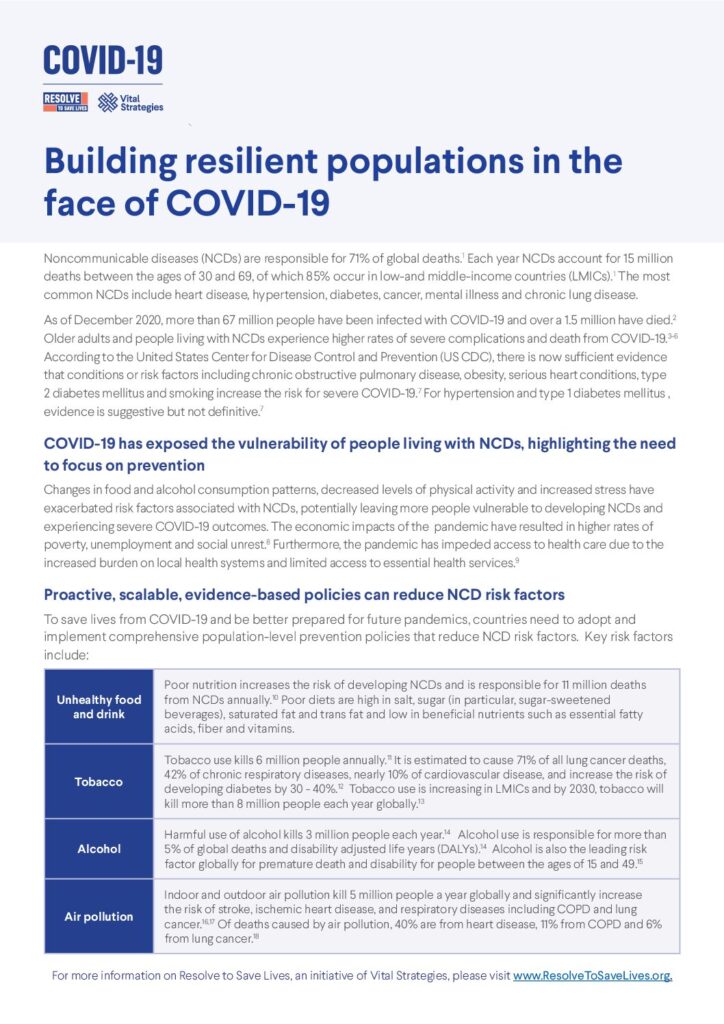
This document highlights the need to reduce noncommunicable disease (NCD) risk factors—such as poor nutrition, tobacco, alcohol use, and air pollution—in order to protect populations from severe COVID-19 outcomes and future pandemics. It recommends evidence-based policies, like trans fat elimination and tobacco control, to build resilience and promote healthier, longer lives.